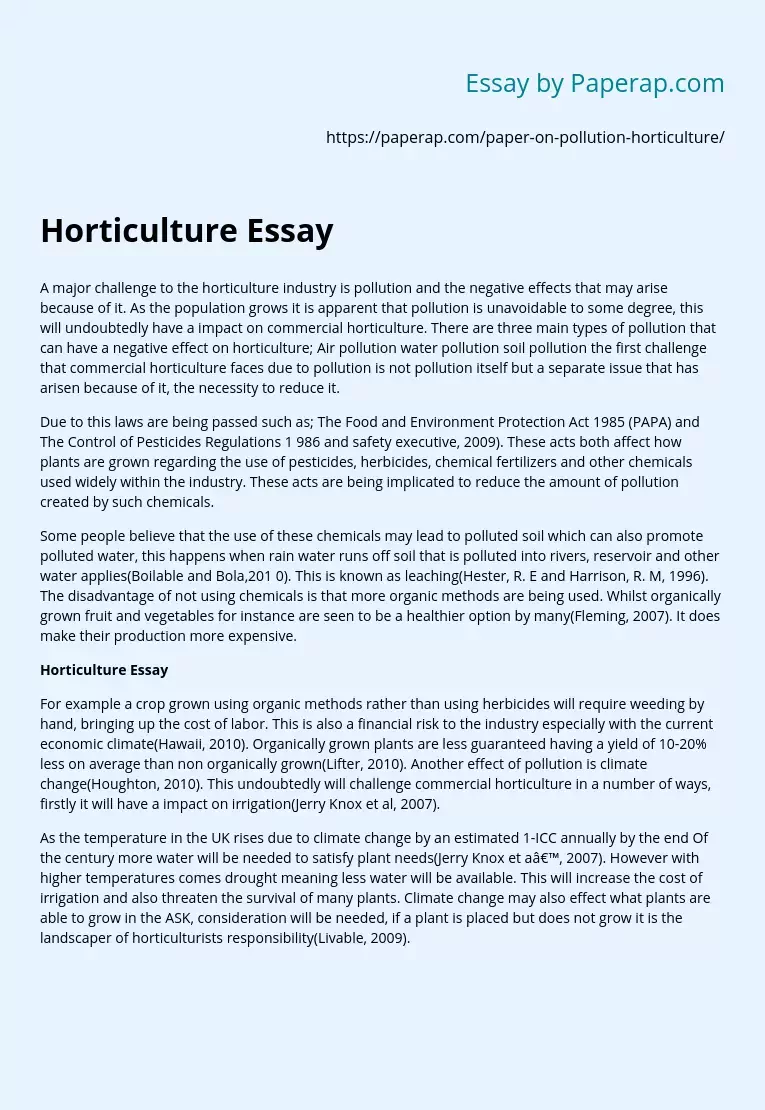Horticulture Essay
A major challenge to the horticulture industry is pollution and the negative effects that may arise because of it. As the population grows it is apparent that pollution is unavoidable to some degree, this will undoubtedly have an impact on commercial horticulture. There are three main types of pollution that can have a negative effect on horticulture; Air pollution water pollution soil pollution the first challenge that commercial horticulture faces due to pollution is not pollution itself but a separate issue that has arisen because of it, the necessity to reduce it.
Due to this laws are being passed such as; The Food and Environment Protection Act 1985 (PAPA) and The Control of Pesticides. These acts both affect how plants are grown regarding the use of pesticides, herbicides, chemical fertilizers and other chemicals used widely within the industry. These acts are being implicated to reduce the amount of pollution created by such chemicals.
Some people believe that the use of these chemicals may lead to polluted soil which can also promote polluted water, this happens when rain water runs off soil that is polluted into rivers, reservoir and other water applies.
This is known as leaching. The disadvantage of not using chemicals is that more organic methods are being used. Whilst organically grown fruit and vegetables for instance are seen to be a healthier option by many. It does make their production more expensive.
For example, a crop grown using organic methods rather than using herbicides will require weeding by hand, bringing up the cost of labor.
This is also a financial risk to the industry especially with the current economic climate(Hawaii, 2010). Organically grown plants are less guaranteed to have a yield of 10-20% less on average than non-organically grown(Lifter, 2010). Another effect of pollution is climate change(Houghton, 2010). This undoubtedly will challenge commercial horticulture in a number of ways, firstly it will have a impact on irrigation.
As the temperature in the UK rises due to climate change by an estimated 1-ICC annually by the end Of the century more water will be needed to satisfy plant needs. However, with higher temperatures comes drought meaning less water will be available. This will increase the cost of irrigation and also threaten the survival of many plants. Climate change may also effect what plants are able to grow in the ASK, consideration will be needed, if a plant is placed but does not grow it is the landscaper of horticulturists’ responsibility.
Horticulture Essay. (2019, Dec 05). Retrieved from https://paperap.com/paper-on-pollution-horticulture/

